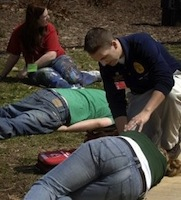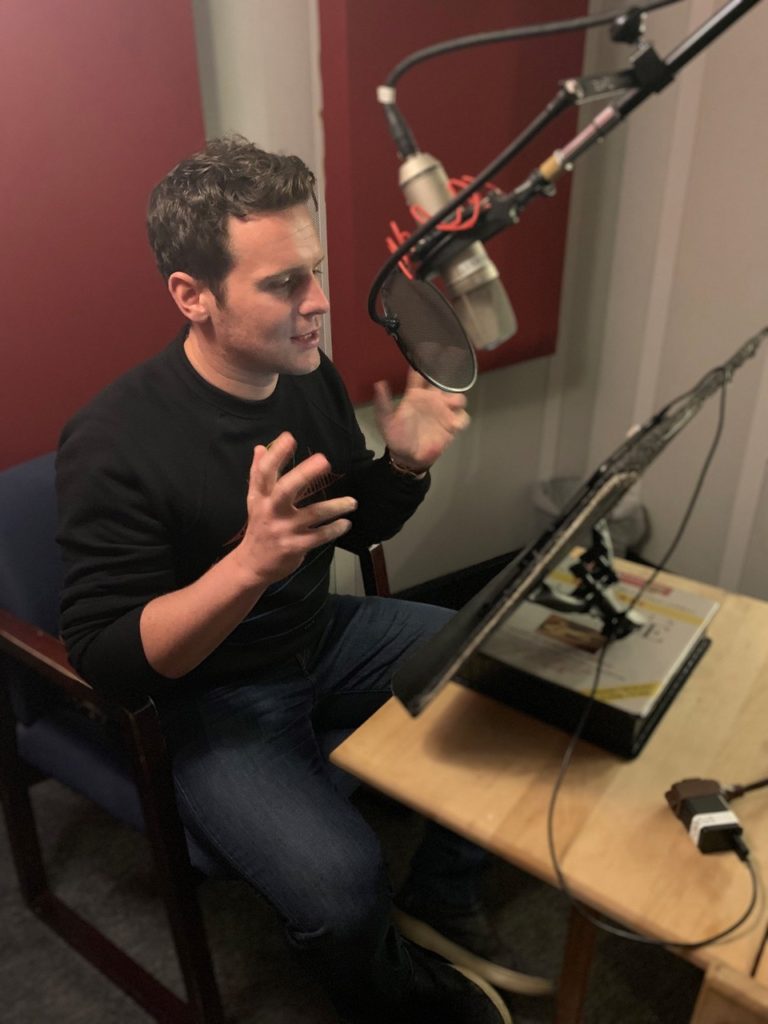
School Shooting Emergency Drill
Some weeks ago, I reported on the mass shooting disaster drills local law enforcement departments conducted at George Mason University in Fairfax County, Virginia. In all the criminal justice courses I’ve taken in college and Fairfax County Police training in which I’ve participated, the instructors repeatedly state that the first respondent to a mass shooting scene is the police.
But in point of fact, the true first responders are the civilians unlucky enough to be at the scene. Meanwhile, most police dispatchers need time to organize their police force in the area and coordinate them with paramedics, fire and rescue, SWAT, campus security and all other entities. This complex coordination only takes minutes, but as seen in emergencies, those minutes can mean the difference between life and death for individuals at the scene.
When one examines the behavior of mass shooters, it can be concluded that the targets of choice are locations yielding the highest possible death toll, such as schools, malls, movie theaters or places of religious worship. Logically, the best time to begin saving lives in an emergency is precisely while the emergency is occurring. The difficulty with this, however, is that the majority of victims in these types of situations have no exposure to such a high-stress scenario. And this plays directly into the mass shooter’s hands in his efforts to raise the casualty rate.
Whenever and wherever an emergency occurs, the first reaction people have is to panic. This is perfectly natural and understandable, but it results in absolute chaos, thereby increasing the body and injury count even further.
So the key question we should ask is: What can be done to reduce the casualty rate BEFORE the police arrive?
The answer is simple: Educate the victims themselves.
I propose a class be created for universities nationwide that teaches students and professors alike how to be prepared in the event of an emergency. The title of this class could be “The Self-Preservation and Defense Class.” It could be a one-credit, mandatory class that incorporates identifying an emergency, securing your location, hiding, CPR, basic first aid, Good Samaritan laws and procedures, and evacuation plans into an overall basic lesson plan. The primary goal of this class would be to teach all incoming freshmen and new students how to identify an emergency situation as quickly as possible and react swiftly to protect themselves and help others when possible. This class could be instructed by retired law enforcement and/or medical experts who would consult with local law enforcement agencies and campus security.
If you already know what to do in an emergency, you won’t waste time either panicking or trying to think your way through. You will know the important considerations and how instantly to act upon them. Moreover, if everyone around you also knows how to react, there will be a cooperative, collective effort to deal with the situation.
For example, in the Columbine High School shooting in Colorado in April 1999, had teachers and students received training they would have known to lock the doors, take cover and provide emergency assistance to the wounded prior to the arrival of the authorities. Protocol for law enforcement at the time was to hold the perimeter until the arrival of SWAT teams, which only aided the shooters in continuing the massacre.
This all underscores the point that despite changes and developments in law enforcement procedure, it ultimately falls to the potential victims to be the true first responders. Had the victims at Virginia Tech been given an opportunity to take such a class, they would have been able to immediately identify the gunshots, rather than dismiss them as construction noises, and thus take steps to barricade themselves in place. This alone would have significantly reduced the casualties.
Unfortunately, the political battle over the dilemma of mass shootings gets in the way of the best chances for an effective solution. But this class would offer an immediate bipartisan solution that empowers the people themselves to lessen the horror and diminish the immense causality rates of all too common mass shootings.



























I think it’s a good idea. It used to be called….’civil defense’…training. The government had a really large department and education program for it….It was mostly focused on defense from a military/ nuclear attack…but other emergencies as well…(earthquake, fire). It was taught maybe 1 hour per week/ or per month to junior high, high school, and even to grade school children….1950’s-1980’s…but petered out in the 80’s and was gone by the 90’s.
For sure it’s time for such education again (I don’t know why they stopped it) from reading the media reports of the ‘Joker’ theatre mass shooting….many of the victims ran ‘into’ his gun fire…….Knowing no better.
The high school kids at Columbine, where the teacher bled to death in the secure classroom had no idea how to stop the flow of blood or do basic 1st aid.
An excellent point, and certainly a solid approach. I would argue that high school would be a better point of access — not everyone goes to college.